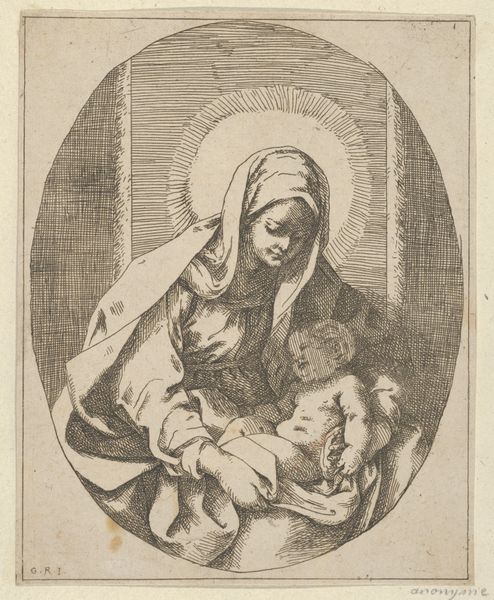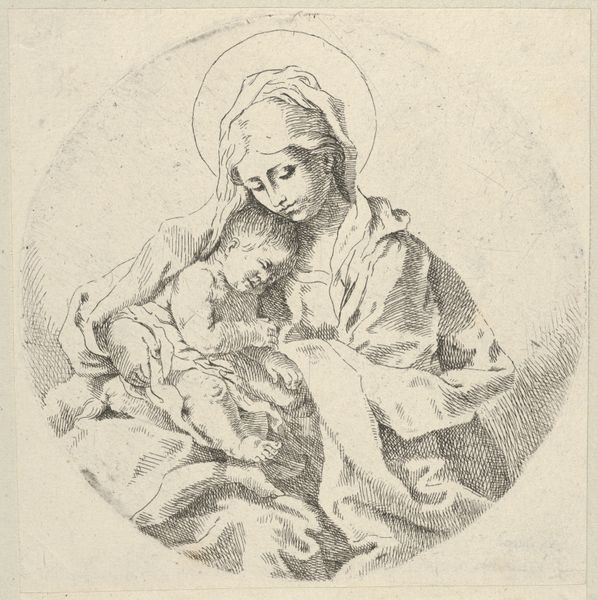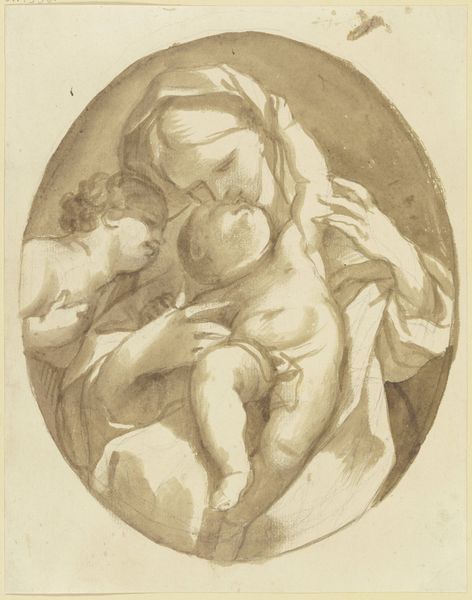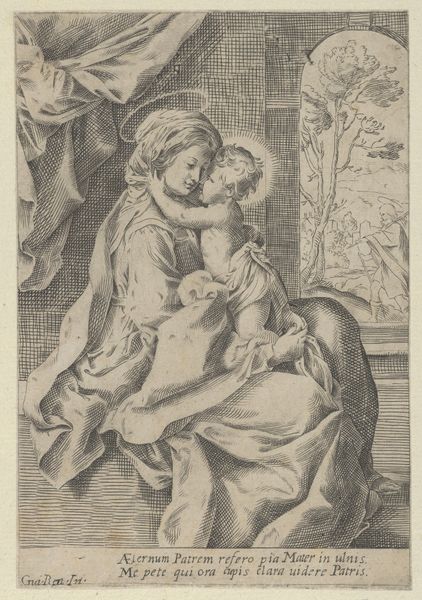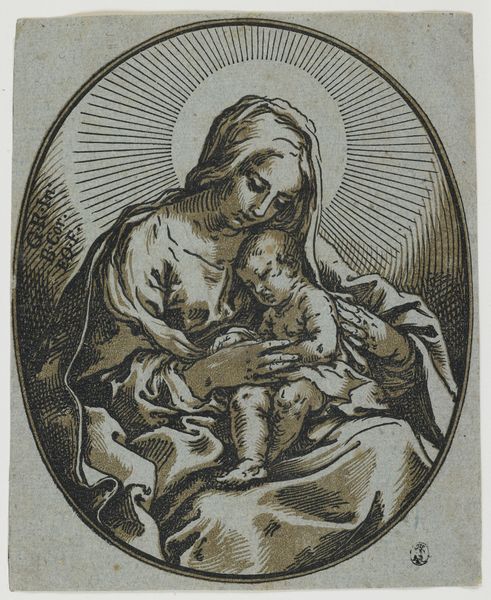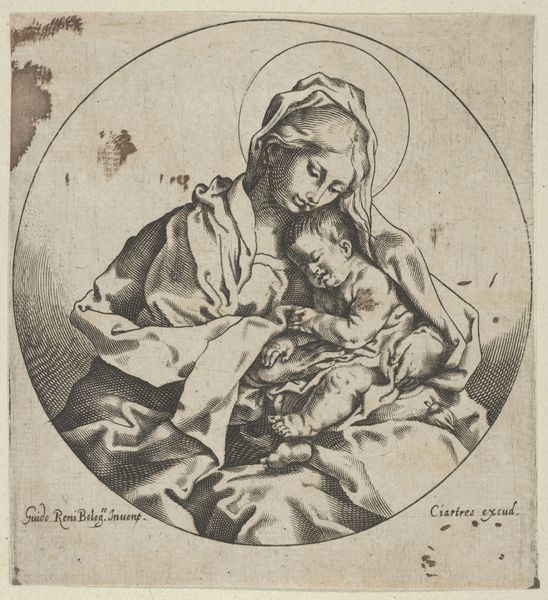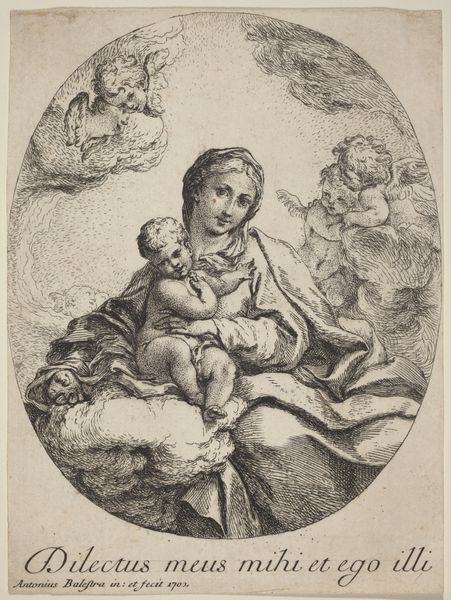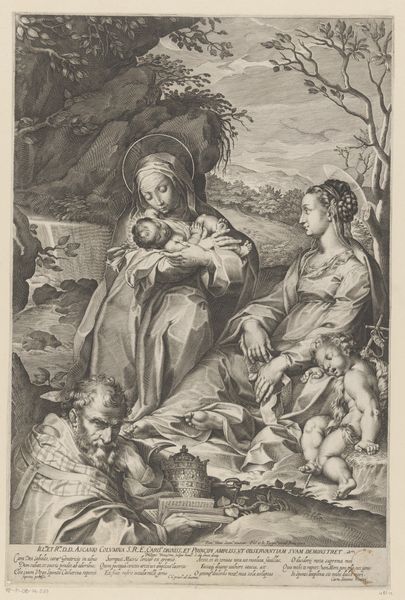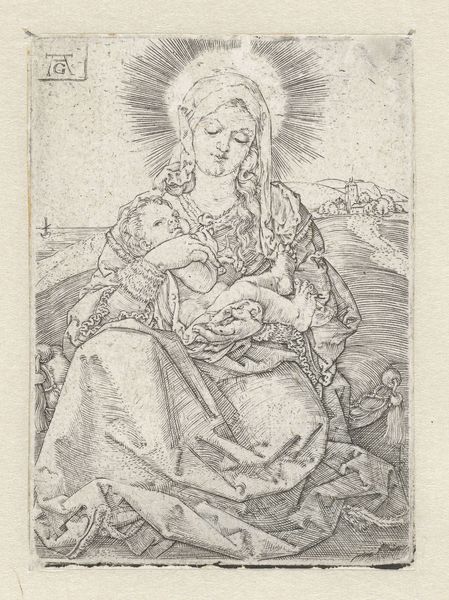
print, engraving
#
portrait
#
toned paper
#
baroque
# print
#
old engraving style
#
figuration
#
history-painting
#
engraving
Dimensions: height 118 mm, width 115 mm
Copyright: Rijks Museum: Open Domain
This print of the Virgin and Child was made by Giovanni Battista Coriolano, who lived in Bologna in the 17th century. He worked in woodcut, a relief printing technique where the artist carves an image into a block of wood, then inks and prints the raised surface. Coriolano’s skill is evident in the intricate details of the figures. Note the fine lines that create subtle shading. Woodcut is usually associated with bold, graphic images but here, the artist has pushed the medium towards something more painterly, emulating the effects of an engraving. Prints like this one were part of a booming industry in early modern Europe, where images could be reproduced and disseminated widely. They were collected, traded, and used for devotional purposes. While Coriolano was a highly skilled artist, he was also participating in a larger system of production and consumption that shaped the art world of his time. Seeing this work through the lens of its making helps us to understand its cultural significance.
Comments
No comments
Be the first to comment and join the conversation on the ultimate creative platform.

